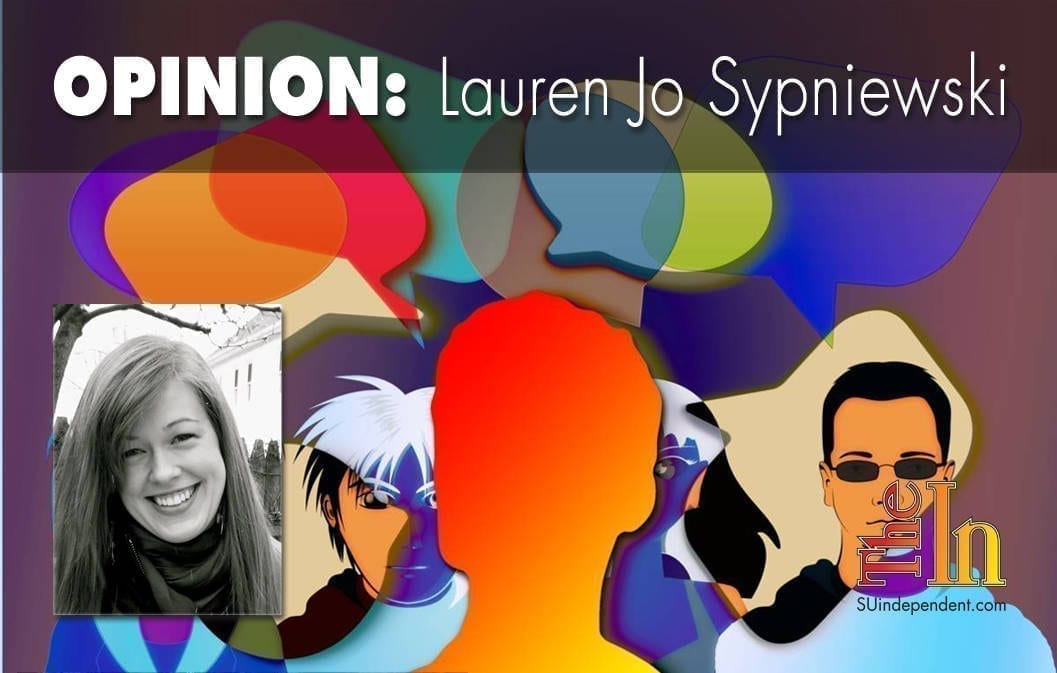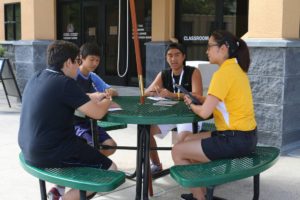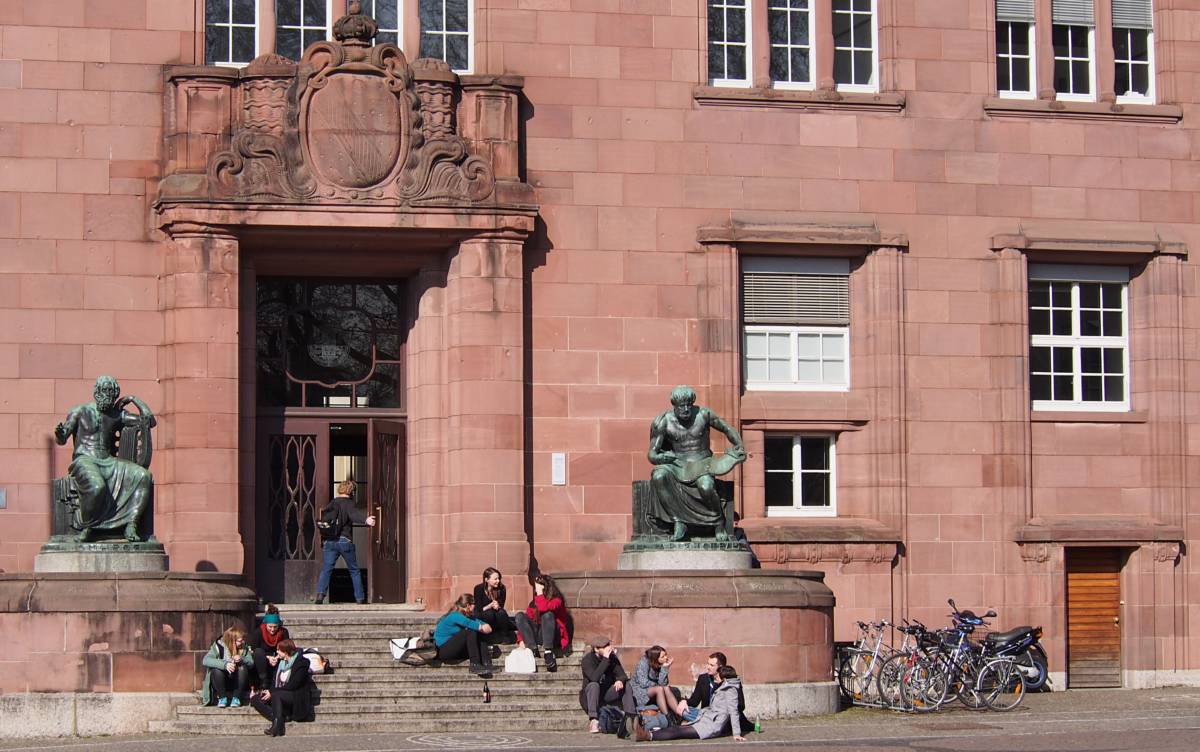 As both an academic and a creative-minded person, I’m constantly on the lookout for research and articles that deal with creativity in the classroom. Recently, I fell upon the question of whether or not academia provides enough opportunities for students to be creative.
As both an academic and a creative-minded person, I’m constantly on the lookout for research and articles that deal with creativity in the classroom. Recently, I fell upon the question of whether or not academia provides enough opportunities for students to be creative.
Oddly enough, the timeline of stumbling upon this question — albeit a relatively simple question — coincided with my decision to leave academia. As DSU’s summer semester comes to a close this week, I suddenly realized this may be the last week of my teaching career. While perhaps the silliest and most obvious of realizations, it struck me in an poignant way, this whole giving up of something I loved for the sake of an unknown. Like someone choosing a vegetarian lifestyle, the bacon cheeseburger of academia in my hands seemed that much more sweet.
And thus it was that I looked upon this question of creativity in the classroom through a bittersweet lens. Underneath, though, it begged a much simpler question: What does creativity in academia even look like? And from there: Can it be replicated? Is it individualized? There’s no need to ask whether or not schools provide enough opportunities for creativity if we — or at least I — do not even know what this means or looks like in the classroom.
Over the last week or so — as customary — I’ve distributed class evaluations. Generally, these evaluations serve as templates that I reference when I’m revising my syllabi. This time, with no foreseeable syllabi in my future, I’ve done them as a personal post-test of sorts: a final review for the class.
Specifically, I asked my intermediate composition students their thoughts on having a theme-based class. While not all feedback was positive, many of the students remarked on how the theme allowed them to be more creative and critical with the material because it wiped away any uncertainty of where to begin. They said:
“We get to focus on a specific topic and really dive into what that topic is and how it affects us.”
“I think having a theme required some specific critical thinking in areas where I wouldn’t have really cared as much to delve into.”
“I’ve really appreciated having a themed class, because it has allowed me to have a starting point for all the papers. It’s been like the spine of the class, and I’ve struggled in previous classes that weren’t themed.”
While some of the students confessed to feeling boxed in by the theme, I wondered if there were other elements besides the theme that increased creativity. Author and educator Sir Ken Robinson devotes his life to speaking on and researching creativity in education. He defines creativity as the “process of having original ideas that have value” and believes that they “more often than not come about through the interaction of different disciplinary ways of seeing things.”
 As a student in a physics class once, I — along with my peers — was given an egg and a challenge: drop it from thirty feet onto pavement without cracking the egg. We were given limitations, an assortment of office material: paperclips, rubber bands, straws, some paper. The results were fascinating. There were paper hang gliders and parachutes, rubber band fortresses and straw fortifications boxed around the egg like a Lincoln Log cabin.
As a student in a physics class once, I — along with my peers — was given an egg and a challenge: drop it from thirty feet onto pavement without cracking the egg. We were given limitations, an assortment of office material: paperclips, rubber bands, straws, some paper. The results were fascinating. There were paper hang gliders and parachutes, rubber band fortresses and straw fortifications boxed around the egg like a Lincoln Log cabin.
While some may argue that we could have come up with even more clever ideas if given free reign, the presence of such restrictions created a much more realistic scenario. Most problem-solving situations involve limitations. A real-estate agent works within the confines of a house buyer’s budget. A marketing consultant works with the preexisting mission statement of the company by which he or she has been hired.
 With Robinson’s words in mind, I think the idea of a theme-based course forces boundaries upon a student with the hopes of “out-of-the-box” thinking as a result. Without those limitations, a student may fall back on old ways of thinking, perpetuating and solidifying ideas they’ve already thought about. On the other hand, with such boundaries, students are forced to connect dots through the “interaction of different disciplinary ways of seeing things.”
With Robinson’s words in mind, I think the idea of a theme-based course forces boundaries upon a student with the hopes of “out-of-the-box” thinking as a result. Without those limitations, a student may fall back on old ways of thinking, perpetuating and solidifying ideas they’ve already thought about. On the other hand, with such boundaries, students are forced to connect dots through the “interaction of different disciplinary ways of seeing things.”
But, then again, how and why and where does this interaction take place? Is creativity less about control and more about letting go?
 Professor and researcher Kevin Dunbar, who studies human development and the origin of new ideas, found (from his investigation into science labs) that significant breakthroughs often happen when people were working together, specifically sharing ideas. At its base, this reveal is nothing new. The Socratic method and the skepticism inherent in critical thinking have been backbone of academia for years, yet Dunbar’s research reaffirms how the vocalization, defense, and modification of ideas often result in creative solutions.
Professor and researcher Kevin Dunbar, who studies human development and the origin of new ideas, found (from his investigation into science labs) that significant breakthroughs often happen when people were working together, specifically sharing ideas. At its base, this reveal is nothing new. The Socratic method and the skepticism inherent in critical thinking have been backbone of academia for years, yet Dunbar’s research reaffirms how the vocalization, defense, and modification of ideas often result in creative solutions.
And so, accordingly, much of the summer class was grounded in open and small group discussion, a fact that many students remarked upon in their evaluations:
“Being able to talk about different people’s opinions and just hearing the different perspectives has been interesting.”
“The biggest takeaway for myself was learning from others students in the open discussions. It is always fun to hear and listen to others talk about how they perceive things and compare them to my ideas.”
“The pros of having a theme based class is it allows for more in depth conversation because you are constantly going over the same topic allowing for new ideas to form and develop.”
Perhaps the most interesting takeaway revolves around the idea that says nothing is new; instead, this idea says we only recycle and reinvent old ideas. What all of this has in common is that fact that very few — if any — good ideas exist in a vacuum. By nature, we are social creatures who communicate, discuss, and create ideas based on interactions — verbal or otherwise — that we’ve had with others. Doesn’t it only seem natural, then, to foster this social, creative environment in the classroom?












